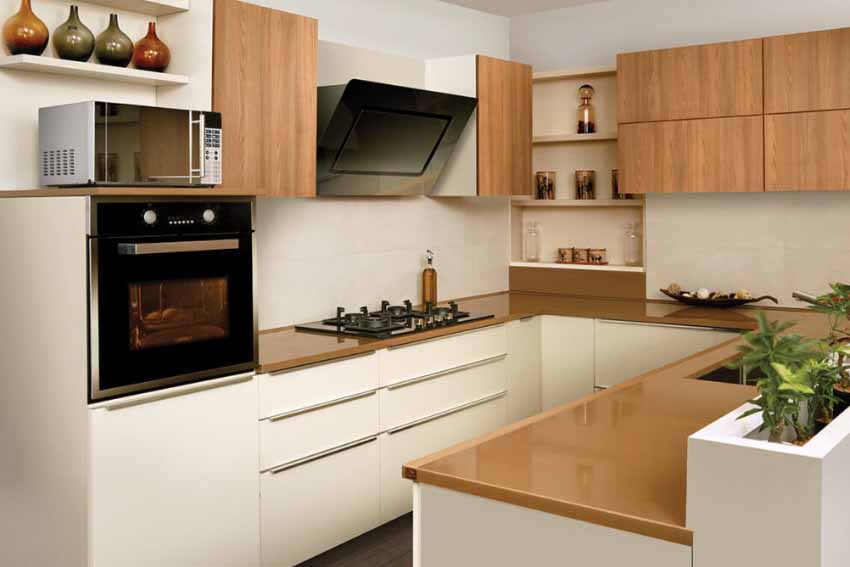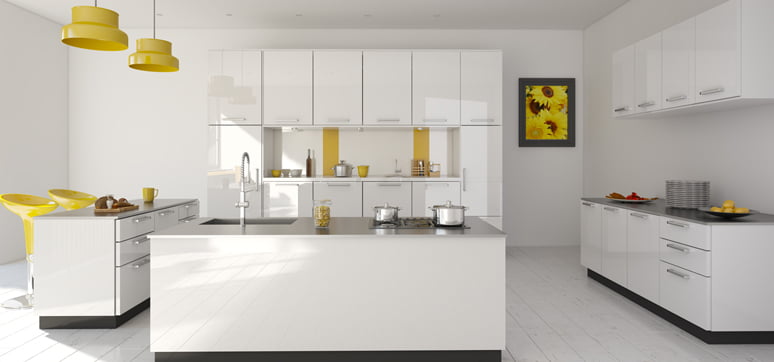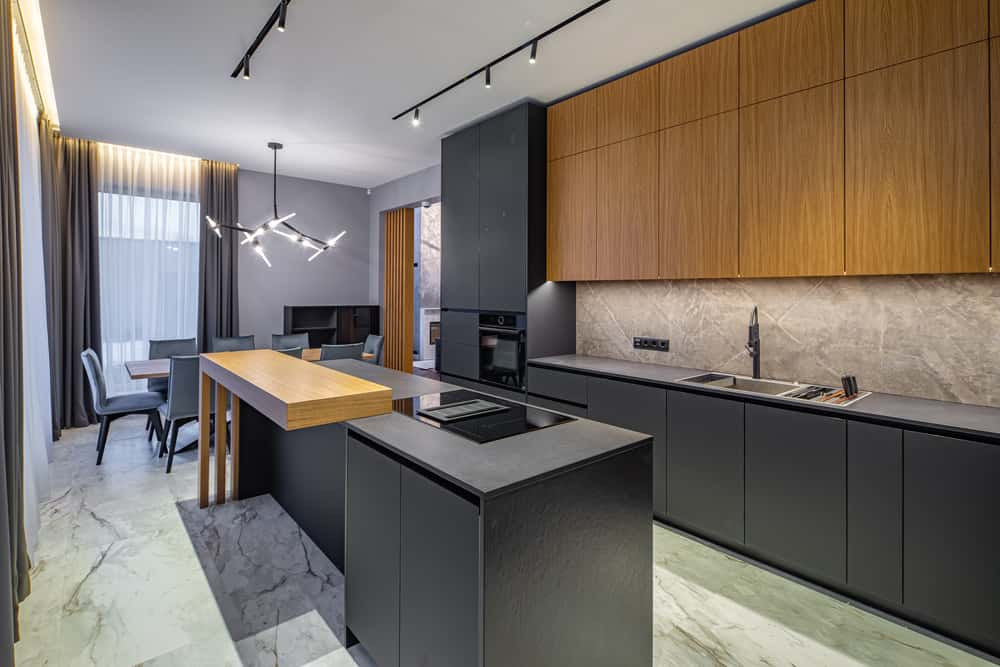Modular kitchen cabinets have rapidly gained popularity in modern homes, thanks to their versatility, ease of installation, and stylish appeal. As the backbone of a functional kitchen, selecting the right cabinets is crucial not only for aesthetic reasons but also for enhancing storage efficiency and overall usability.
This guide aims to provide comprehensive insights into choosing the best modular kitchen cabinets tailored to your specific needs, covering essential aspects from understanding different cabinet types to factors influencing selection, budget planning, customization, installation, and maintenance.
Understanding Modular Kitchen Cabinets
What Are Modular Kitchen Cabinets?
Modular kitchen cabinets are pre-fabricated units designed to fit together seamlessly, creating a customized kitchen layout. Unlike traditional cabinets, which are built on-site, modular cabinets are manufactured in a factory setting, ensuring precise dimensions and high-quality finishes.
Differences Between Modular and Traditional Kitchen Cabinets:
| Feature | Modular Cabinets | Traditional Cabinets |
|---|---|---|
| Manufacturing | Factory-made with consistent quality | Built on-site; quality may vary |
| Customization | Highly customizable, flexible modules | Limited customization based on site |
| Installation Time | Quick installation (few days) | Longer installation (weeks or months) |
| Maintenance | Easy to maintain and replace parts | Harder to maintain, requires expert help |
Benefits of Modular Kitchen Cabinets
- Customizability and Flexibility: Modular kitchen cabinets can be tailored to fit any kitchen layout and size, offering a high level of customization to suit individual preferences.
- Easy Installation and Maintenance: Quick installation reduces labor costs and minimizes disruption. Maintenance is straightforward, with replaceable components if needed.
- Enhanced Storage Solutions and Space Optimization: Modular designs include a range of smart storage options like pull-out shelves, corner units, and integrated organizers that maximize space utilization.
Factors to Consider When Choosing Modular Kitchen Cabinets

Kitchen Layout and Space
Understanding your kitchen’s layout—whether it’s L-shaped, U-shaped, galley, or open-plan—is crucial when selecting modular cabinets. The layout determines the number and type of cabinets needed. For example, a galley kitchen may require more vertical storage, while an L-shaped kitchen might benefit from corner units to optimize space.
Material Options for Modular Cabinets
Selecting the right material is essential for durability and appearance. Common materials include:
- Wood: Offers a classic look but may require more maintenance.
- Plywood: Durable, resistant to moisture, and less prone to warping.
- MDF (Medium-Density Fiberboard): Economical and smooth finish but less resistant to moisture.
- Particleboard: Cost-effective but less durable and susceptible to moisture damage.
| Material | Durability | Cost | Appearance |
|---|---|---|---|
| Wood | High | Expensive | Rich, natural aesthetic |
| Plywood | High | Moderate | Versatile with various finishes |
| MDF | Moderate | Low | Smooth and paint-friendly |
| Particleboard | Low | Low | Basic appearance, least durable |
Finish and Color Choices
Popular finishes for modular cabinets include:
- Laminate: Durable and available in various colors and textures.
- Acrylic: High-gloss finish, easy to clean but may show fingerprints.
- Membrane: Provides a smooth, matte finish, resistant to heat and moisture.
- PU Paint: Offers a sleek, glossy appearance with high durability.
Choosing the right color is also essential. Light colors can make small kitchens appear larger, while darker shades add warmth and depth to spacious kitchens.
Cabinet Door Styles
Cabinet doors come in several styles, such as:
- Shaker: Simple and classic, ideal for both modern and traditional kitchens.
- Flat: Sleek and minimalist, perfect for contemporary settings.
- Raised Panel: Adds depth and dimension, suitable for classic or transitional kitchens.
Storage Needs and Functional Features
Assess your storage needs by considering the number of drawers, shelves, and pull-out units required. Incorporate smart storage solutions like corner units, pantry pull-outs, and cutlery organizers to optimize space and functionality.
Budget Planning for Modular Kitchen Cabinets
Understanding Cost Factors
The cost of modular kitchen cabinets is influenced by:
- Material: High-end materials like hardwood are more expensive.
- Finish: Glossy or matte finishes can affect pricing.
- Hardware: Premium handles, knobs, and hinges add to the cost.
- Size: Larger kitchens with more cabinetry will increase costs.
Tips to Save Money
- Opt for cost-effective materials such as MDF or particleboard.
- Retain existing elements like countertops or appliances to reduce expenses.
Tips for Customizing Your Modular Kitchen Cabinets
Personalizing the Design
Customizing your cabinets involves adjusting dimensions, colors, and configurations to match your kitchen’s unique layout and your personal style.
Adding Accessories and Hardware
Select accessories like handles, knobs, hinges, and soft-closing mechanisms based on functionality and aesthetic appeal. For example, sleek chrome handles work well in modern kitchens, while ornate brass handles suit traditional designs.
Best Practices for Installing Modular Kitchen Cabinets
Professional vs. DIY Installation
- Professional Installation: Ensures accuracy and saves time but may be more costly.
- DIY Installation: Cost-effective but requires basic carpentry skills and tools.
Common Installation Mistakes to Avoid
- Misjudging measurements can lead to misalignment.
- Failing to level cabinets properly may cause doors to swing open.
Maintenance and Care Tips for Modular Kitchen Cabinets

Routine Cleaning and Maintenance
Regularly clean cabinets with a soft cloth and mild detergent. Avoid harsh chemicals that could damage finishes.
Extending the Lifespan of Your Cabinets
Prevent damage by immediately wiping off spills and avoiding excessive weight on shelves. Use high-quality materials and hardware to reduce wear and tear.
Selecting the right modular kitchen cabinets is essential for creating a functional and beautiful kitchen space. By considering factors like layout, material, style, and budget, you can make an informed decision that aligns with your preferences and needs. Remember to incorporate personal touches and stay updated with the latest trends to enhance both the utility and aesthetics of your kitchen.
